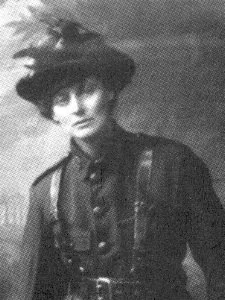Republican History: Reviving The Rebel Spirit
In the latest instalment of the Republican History series, Philip Ferguson of the Workers’ Party of New Zealand and a former resident of Dublin recounts how radical opposition was organised to the last British royal visit to Ireland’s capital 100 years ago. Read on...
This year marks the 100th anniversary of the last visit of a British monarch to Dublin, that of the Anglo-German king of England, George V, in 1911.
The importance of the protests against this visit is often overlooked, however. The Easter Rising and the Great Dublin Lockout have tended to overshadow the anti-royal protests and their significance in the assembling of the forces which made the events of 1916 possible. Not only did the anti-royal protests of 1911 bring together these forces, the protests were also the first sizeable actions to indicate the revival of radical republicanism in the 20th Century.
Although there were occasions during which British rule in Ireland was disturbed in the 1890s and the first decade of the 1900s, as during 1898 when socialists, republicans and nationalists organised large-scale commemorations for the centenary of the United Irish rebellion and protests during the Boer War, these were exceptions.
In a 1923 article about the 1911 protests, Constance Markievicz wrote: “Everything had been so tame for so many years that they [the ruling class] had come to believe that they had succeeded in pacifying Ireland. They never dreamed that there was anything more in it than a little spark from the ashes of a dead idea.”
Unfortunately for the establishment, the protests of that year were not so much a reflection of a little surviving spark from an idea whose time had passed, as the reflection of the rise of new movements in Ireland – the women’s movement, organised and radicalised labour, and a revitalised republican current – and the fact that every such movement has inevitably had to face the issue of Ireland’s domination by Britain and take a stand on it.
A central role in the 1911 protests was played by women, especially members of the republican women’s organisation founded by Maud Gonne in 1900, Inghinidhe na hÉireann [Daughters of Ireland].
As Markievicz wrote, the Inghinidhe “was always in favour of the most extreme action possible”, while Griffith and his co-thinkers “seemed to be in great dread of a riot”. The poet Ella Young, who belonged to the group, would later recall it as “composed of girls who work hard all day in shops and offices owned for the most part by pro-British masters who may at any moment discharge them for ‘treasonable activities’. To be dismissed in such wise means the semi-starvation of long continued unemployment. These girls dare it, and subscribe, from not too abundant wages, generous amounts for the hire of halls to be used as classrooms and for theatre rehearsals.”
The first woman of this generation to go to prison in the cause of Ireland was, not surprisingly, Inghinidhe stalwart Helena Molony. A life-long republican, feminist and labour activist, Molony smashed a window in which spectacles with lens pictures of King George and Queen Mary were being displayed during the protests against the English king’s visit.
Markievicz would write over a decade later, “It is a common superstition that no woman can throw a stone; Miss Molony is a living proof to the contrary, and she and a couple of the boys [na Fianna] kept up a lively fusillade at the illuminations hung out over the shops on either side of us as we drove along.”
The political contradictions within the nationalist camp which were to come out starkly in the great Dublin industrial battle of 1913-14, the Easter Rising, the Tan War and, ultimately, the Civil War also appeared at the time of the Royal Visit in 1911.
On the day of the coronation, the Socialist Party of Ireland [Cumannacht na hÉireann], radical suffragists and labour activists, republicans and some other nationalists had mobilised 30,000 people on the streets of Dublin in opposition to British rule. No doubt buoyed by this success and proclaiming the prospective unwanted visitors as “representatives of the country that enslaved us [and whose] coming in state was just as the jangling of chains in the face of each rebel”, they decided to organise protests against the visit.
Markievicz, Molony and Fianna Éireann opened the campaign by organising a large protest outside Dublin City Hall, forcing the nationalist and unionist members of the Corporation to abandon their plan of presenting a “loyal address” to the British royals and “restrain their ardour and seek for a less public means of displaying their loyalty”.
More militant plans were laid for the day of the visit.
“Our idea,” wrote Markievicz, “was to use this visit of England’s king for propaganda... The majority, led by Mr Griffith, seemed to be in great dread of a riot, and of the people getting out of hand and getting hurt by the police. The others considered that the best way to make the Royal visit unpopular with the people was if we could get the police to attack us, and we were willing to take the risk.”
A section of the IRB, including some of its supposed firebrands such as Bulmer Hobson, backed out and organised an alternative activity for the day – a commemoration for Wolfe Tone at his Bodenstown grave in County Kildare. As Markievicz would scathingly put it, “He was one of those who preferred the limelight and laurels to be won by a fierce speech at a rebel’s graveyard to the possibility of getting a hammering from the police or being arrested.”
In the event, thousands turned out for the protest, in the course of which Markievicz, as usual both a speaker and in the forefront of the melee, made several gallant attempts to destroy a Union Jack. She tried first to set it aflame with matches, but found that bunting did not burn. When the police tried to rescue it, she tied it around her waist and fought with them for possession of it. A little while later, she got a boy to fetch paraffin, soaked it in the paraffin and then set it alight. This left it “only charred here and there, so we carried it on to Smithfield, where we held the next meeting, and cut it into tiny bits and distributed it among the crowds”. During these protests, Helena Molony was arrested but, much to her annoyance, a sympathiser paid the fine and she was released.
A large meeting was organised in Beresford Place, according to some recent accounts to welcome Helena Molony – although Markievicz states it was to welcome Walter Carpenter, a socialist who had been arrested for comments made in a speech. In any case, Molony in the course of her speech at this rally, referred to King George as the biggest scoundrel in Europe, prompting a police charge at the platform. This time, Molony and Markievicz were arrested. To their dismay, they were not given a prison sentence, a decision Markievicz believed was made by a higher authority than the court, the higher authority realising “that they could not help us build up a rebel movement in a better way than by sending us to jail for a month”.
She was probably right about this as the British had discussed banning the earlier rally on what they referred to as ‘Coronation Day’ but decided not to as a ban would give publicity to the anti-imperialists or, as British administrator Birrell put it, “To advertise these semi-ridiculous persons would be to meet their wishes.”
Although the Irish radicals regarded both the ‘Coronation Day’ and Royal Visit protests as great successes, one historian remarked, “Both the Coronation Day celebrations and the royal visit, from the viewpoint of the authorities, were resounding successes.”
While it is true that sizeable numbers of loyal Irish turned out, the British establishment view is perhaps evidence of how little they appreciated the changes in political consciousness taking place in nationalist Ireland – in particular, the revival of a new rebel spirit which would shake both British rule and Irish capitalism to their very core.
Two years later, the forces who protested the British monarch’s visit would come together again in support of the struggle by thousands of Dublin workers against the nationalist bosses’ attempts to crush them and their union, the Irish Transport and General Workers Union of Larkin and Connolly.
In 1914, many of the same forces would unite to oppose the first global imperialist war and the British state’s attempts to involve Irish people in the slaughter. And two years further on, the same forces would attempt an insurrection to pave the way to the liberation of Ireland and its people.

